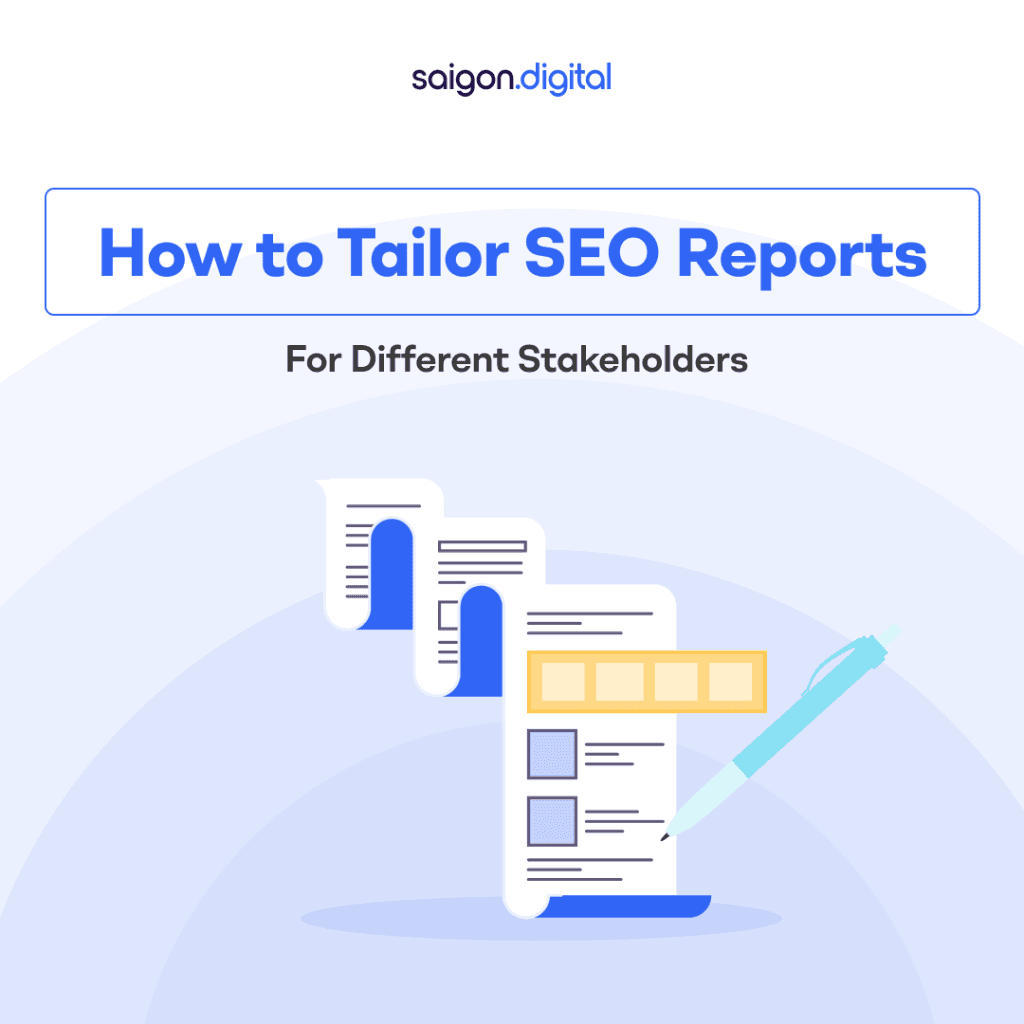
Why One-Size-Fits-All SEO Reporting Doesn’t Work
Imagine handing a 30-page detailed technical SEO audit to a busy founder. It’s likely to be skimmed at best and misunderstood at worst. On the other hand, handing a one-page summary to an SEO specialist would likely frustrate them with the lack of actionable detail. As you can see, not every position in the same company speaks the same language, one person might want this information while the other wishes for that information. So it’s important to have a clear understand of what exactly each shareholder’s interest is in an SEO performance:- CMOs are strategic: They care about how SEO supports the overall marketing goals.
- Founders/CEOs are high-level: They want specific numbers like ROI, growth, and market position insights.
- Marketing teams are tactical: They need granular data to tweak and improve campaigns.
- Product teams might be concerned with user engagement and technical SEO.
Core Elements Every SEO Report Should Include
Before we dive into customisation, let’s cover the essential components that any good SEO report should feature:- Traffic metrics (organic sessions, users, bounce rate)
- Keyword rankings (movements and trends)
- Conversions and goals (leads, sales, sign-ups)
- Top performing pages (which content is winning)
- Backlink profile (new links, lost links)
- Technical SEO health (site speed, mobile usability, indexing issues)
- Opportunities and next steps (recommendations based on findings)
How to Tailor SEO Reports for Different Stakeholders
Now that you’ve understood the very basics of an SEO report, it’s time to take those elements and craft them in a way that is relevant to the person receiving the report.1. SEO Reports for CMOs
What CMOs Care About:- How SEO impacts the marketing funnel
- Organic growth trends over time
- Brand visibility improvements
- SEO’s contribution to revenue and leads
- Competitive positioning
- Focus on strategic outcomes: Instead of highlighting every new backlink, showcase how organic traffic contributed to a 20% increase in qualified leads, for example.
- Visualise data: Use data visualisation such as graphs, charts, and infographics to show trends and growth over time.
- Benchmark against KPIs: Report against marketing goals, like "increase organic traffic by 15% in Q2." This will help in showcasing SEO results in a broader way.
- Title: "Organic Growth and Impact on MQLs"
- Visual: Line chart showing organic traffic growth + bar chart showing month-over-month lead increases
- 2-3 key takeaways: “Organic traffic rose 18% in Q2, contributing to a 22% increase in marketing qualified leads (MQLs).”
2. SEO Reports for Founders or CEOs
What Founders Care About:- ROI: Is SEO worth the investment?
- Market position and brand strength
- Business growth, not just traffic numbers
- Be concise and impactful: Founders have limited time. The more concise and more impactful you can make your report, the better.
- Link SEO activities to revenue: For example, "SEO-driven landing pages generated £45,000 in direct revenue last quarter."
- Highlight big wins and strategic risks: If a new competitor is outranking you, flag it then give out suggestions to help overcome this challenge.
- Title: "SEO Impact on Business Growth"
- Visual: Pie chart showing traffic sources > Organic share
- Bullet points:
- SEO contributed 35% of total revenue in Q1.
- 20% YoY growth in branded search terms.
3. SEO Reports for Marketing Teams
What Marketing Teams Care About:- Tactical insights for improving campaigns
- Keyword opportunities and content performance
- User engagement and on-page SEO metrics
- Get into the details: Marketing teams want to see keyword rankings, CTRs, bounce rates, and engagement metrics. Give them as much detail as possible, this could help them craft the appropriate campaign and marketing strategy.
- Provide action items: For example, "Consider updating Meta descriptions for these pages to boost CTR."
- Highlight content insights: In your report, you can give interesting insight intothe blog posts such as which blog posts are underperforming? Which landing pages need CRO improvements? This provides the marketing team with various ideas on hidden gems to explore.
- Title: "Keyword Opportunities for Q2"
- Visual: Table showing keyword gaps, with recommended next actions
- Bullet points: Blog post on "Eco-friendly Office Tips" ranks #11, optimisation could push it to page 1.
4. SEO Reports for Product or Development Teams
What Product Teams Care About:- Technical SEO issues impacting user experience
- Page speed, mobile usability, Core Web Vitals
- How SEO insights inform product development (e.g., features users search for)
- Be technical but actionable: Identify site health issues with clear recommendations.
- Use scorecards: Quickly communicate technical SEO health via colour-coded scores such as red for Poor health or green for Good health.
- Focus on user-centric metrics: Report on Core Web Vitals and mobile friendliness.
- Title: "Technical SEO Health – Priority Issues"
- Visual: Heatmap of site pages by health score
- Bullet points:
- 15 pages with slow load times (>3s)
- 8 pages with mobile responsiveness errors
Best Practices for Creating Stakeholder-Specific SEO Reports
While crafting SEO reports, here are some universal tips to keep in mind no matter who you're reporting to:- Know your audience before you start: Ask stakeholders what metrics matter most to them.
- Less is more: Highlight 3–5 key insights rather than overwhelming them with data dumps.
- Tell a story: Frame data within a narrative. You can follow this format for example for the simplest way of delivering information: challenge > action > result.
- Use consistent formatting: Keep reports clean and professional: clear headings, bullet points, white space.
- Automate where possible. Use tools like Google Data Studio, Looker Studio, or custom dashboards that update automatically but allow manual tweaking for context.
Tools That Help Tailor SEO Reports
If you find yourself not having enough time to create an SEO report manually then consider using these tools to help create tailored SEO reports:- Looker Studio (formerly Google Data Studio): They provide custom dashboards based on audience.
- SEMRush and Ahrefs: These tools allow you to export white-label reports as well as an overview audit of your entire website.
- Screaming Frog: After this tool finishes its audit on your website, it allows you to export all issues, warnings and opportunities relating to your website for future reference. This is useful for technical SEO reports.





